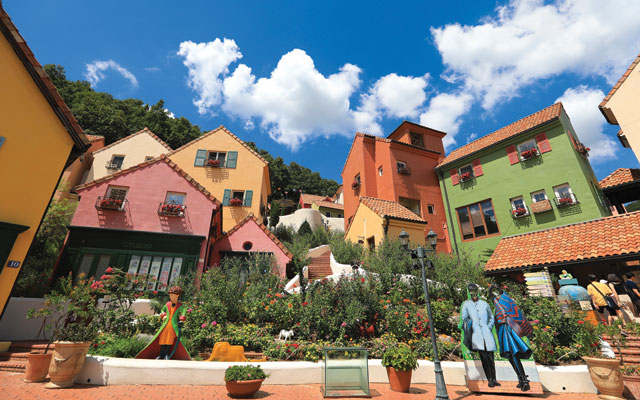To stimulate greater international visitor traffic, the provinces of Gyeonggi and Gyeongsangnam are beefing up offerings and stepping up transportation connections with nearby gateway cities.
A s the major destinations of Seoul, Busan and Jeju enjoy a growing roster of flight and cruise connections, surrounding provinces in South Korea are dangling new attractions and various promotions to lure travellers beyond the popular trio.
These provinces are also making efforts to improve transportation links from the gateway hubs, as industry players recognise that access is the biggest factor restricting visitors from venturing beyond the key cities.

Gyeongsangnam-do Provincial Government’s marketing project manager, Shin Min Young, expressed: “Transportation is still the most important issue in local tourism, and it should be improved so that foreign FITs can (travel) conveniently.”
She explained that although information on public transportation is available on social media and online, it is largely in Korean and remains “inconvenient” for travellers. The current alternative for visitors hoping to explore the Gyeongsangnam countryside would be renting a car at the airport.
Todd Seo, overseas marketing team assistant manager of Gyeonggi Tourism Organization, shares similar observations: “Gyeonggi is located very near Seoul and Incheon International Airport, but many foreign tourists stay only in Seoul. We figured that the biggest factor preventing independent tourists from visiting Gyeonggi is transportation.”
As such, the tourism organisation has launched EG Tour Bus, a service that plies seven themed routes covering different attractions around the province, seeking to solve the lack of transportation that travellers often face when venturing beyond Seoul. Gyeonggi is situated an hour by train from Seoul.
“So we made EG Tour Bus (with) various themes such as peacefulness, healing and history. Since tourists can visit three to four attractions in a day (on this shuttle), EG Tour Bus has become very popular now,” he added.
Similarly, Gyeongsangnam – located west of Busan – is planning to launch a one-day bus tour that runs between Busan and several cities in the province. It will include an English-speaking guide and will be sold through OTAs such as Trip.com, revealed Shin.
And while foreign tourist accessibility “has improved gradually” with services like EG Tour Bus and K-Shuttle – a foreigner-exclusive shuttle visiting Korea’s main tourist cities – having ride-hailing services would also be beneficial, opined Seo.
He said: “The restriction of shared ride services like Uber is a barrier to improving accessibility. If these were to be available in the foreseeable future, foreign tourists can travel around South Korea more conveniently and actively.”
On top of these new products, Gyeonggi and Gyeongsangnam are banking on the Korean pop and drama wave to pump up tourist volume.
Gyeonggi is known for its “Hallyu tour activities”, Seo said, thanks to popular filming sites such as Petite France from variety show Running Man, and Ilyeong Station from boy group BTS’ music video, Spring Day.
In the case of Gyeongsangnam, the Hallyu wave has brought in more tourists “who visit Korea three times or more”, said Shin.
She continued: “The demand for new sightseeing places other than the main cities is steadily increasing. In particular, tourists from countries with a high rate of revisit, such as Singapore, want to visit new places other than famous locations such as Seoul and Jeju.”
Among the popular activities in Gyeongsangnam are temple stays, wellness programmes such as herbal foot spas and oriental medicine therapy, learning about traditional crafts such as raden (Korean lacquerware), and marine sports like yachting and skin diving.




















